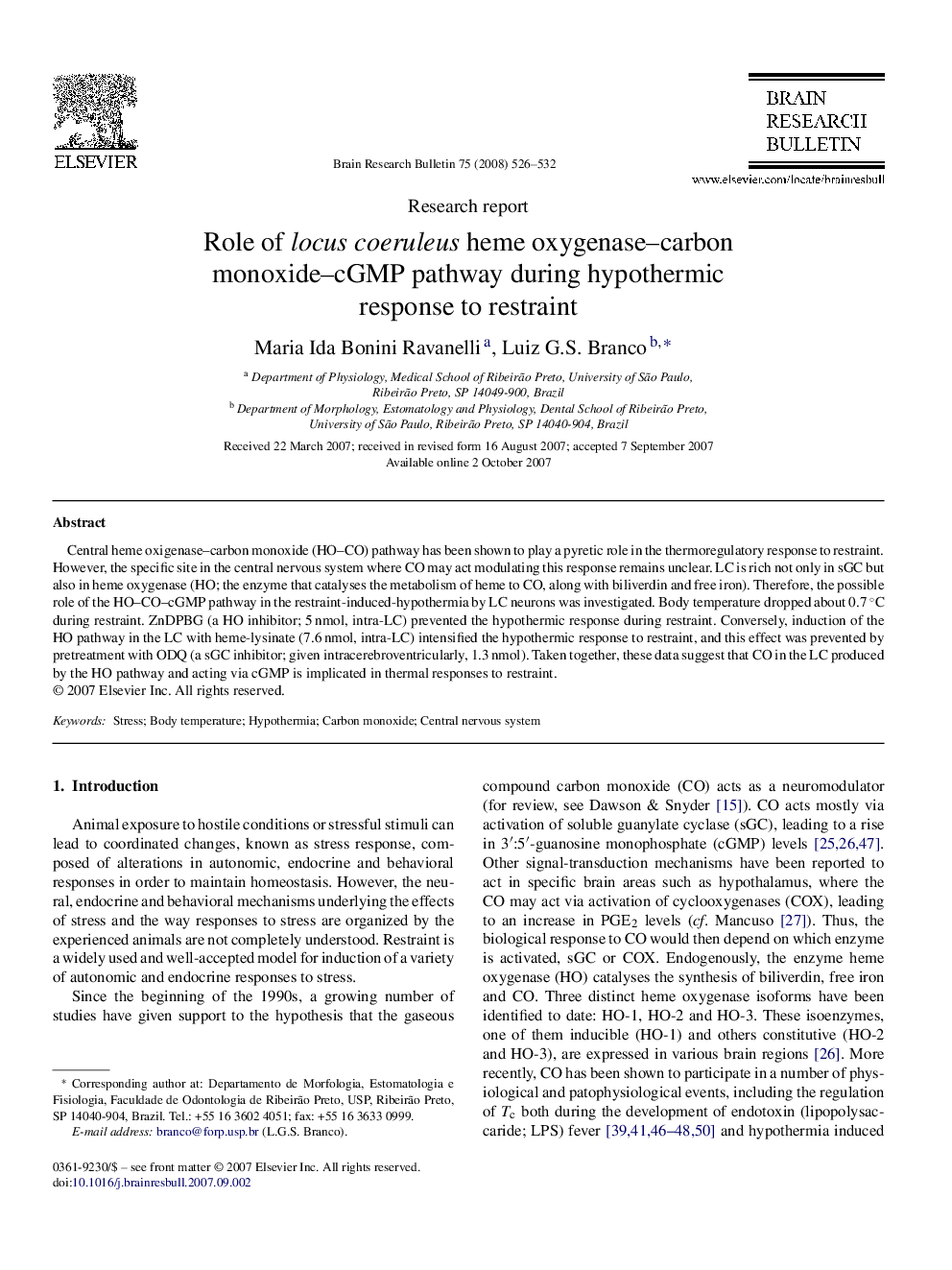| Article ID | Journal | Published Year | Pages | File Type |
|---|---|---|---|---|
| 4319984 | Brain Research Bulletin | 2008 | 7 Pages |
Central heme oxigenase–carbon monoxide (HO–CO) pathway has been shown to play a pyretic role in the thermoregulatory response to restraint. However, the specific site in the central nervous system where CO may act modulating this response remains unclear. LC is rich not only in sGC but also in heme oxygenase (HO; the enzyme that catalyses the metabolism of heme to CO, along with biliverdin and free iron). Therefore, the possible role of the HO–CO–cGMP pathway in the restraint-induced-hypothermia by LC neurons was investigated. Body temperature dropped about 0.7 °C during restraint. ZnDPBG (a HO inhibitor; 5 nmol, intra-LC) prevented the hypothermic response during restraint. Conversely, induction of the HO pathway in the LC with heme-lysinate (7.6 nmol, intra-LC) intensified the hypothermic response to restraint, and this effect was prevented by pretreatment with ODQ (a sGC inhibitor; given intracerebroventricularly, 1.3 nmol). Taken together, these data suggest that CO in the LC produced by the HO pathway and acting via cGMP is implicated in thermal responses to restraint.
